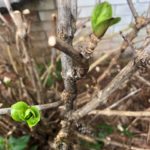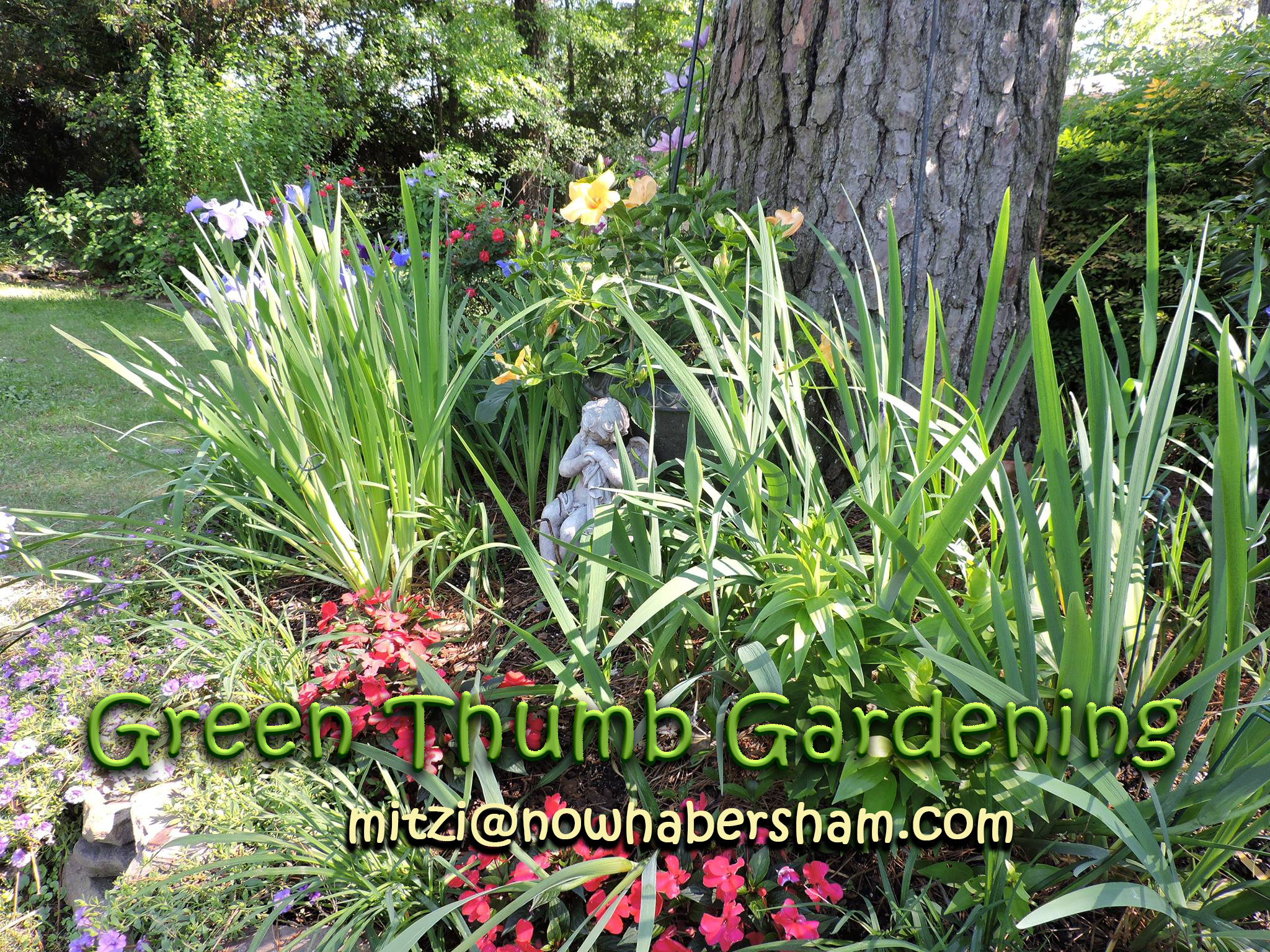
The iris and daylilies are starting to wake from a long winter’s nap. Their strappy leaves are poking up through the soil in my flower beds and containers. I gently lifted the mulch from the container holding my prized peony and I could see signs of new growth. Buds on my hydrangeas are beginning to emerge. The Japanese or saucer magnolias throughout the state are coming to life with their huge pink and white blooms, soon to be followed by daffodils popping up here, there, and everywhere. I love this time of year when some mild temperatures and sunshine are sandwiched between the chill of winter. In Georgia, our weather can best be described in memes that are prolific on social media.
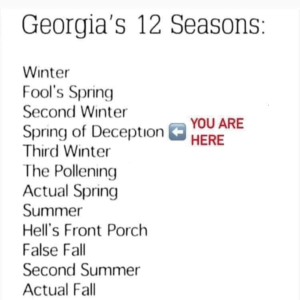 After a 20 year career in television weather forecasting, I predict we are somewhere between Spring of Deception, Third Winter, and The Pollening. I only throw in the pollen because I noticed a light dusting on my car this morning. Ugh!
After a 20 year career in television weather forecasting, I predict we are somewhere between Spring of Deception, Third Winter, and The Pollening. I only throw in the pollen because I noticed a light dusting on my car this morning. Ugh!
Ready or not, the first day of spring by the calendar falls later this month on Saturday, March 20. The March equinox marks the start of spring in the southeast. After this date, the Northern Hemisphere begins to be tilted more toward the Sun, resulting in increasing daylight hours and warming temperatures. What this means for us is increasing sunlight hours, with earlier dawns and later sunsets and more time to enjoy outdoors. If you enjoy gardening, this is our time!
Garden planner for March
- Start reseeding your fescue lawn or plant seeds in the bare spots when the weather begins to warm.
- Fertilize your fescue or zoysia.
- Don’t forget pre-emergents for spring weed control.
- Prune camellias after blooming is complete and fertilize them.
- Divide perennials as needed before new growth advances.
- Prune roses by trimming
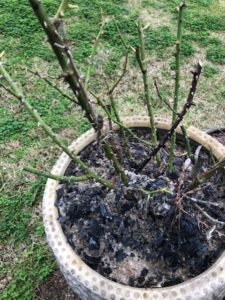 1/3 of the canes on climbers and 18” on hybrid teas and fertilize them.
1/3 of the canes on climbers and 18” on hybrid teas and fertilize them. - Cut back butterfly bushes to 1/3 the size desired this summer.
- Check gardenias for whiteflies. Use insecticidal soap as needed.
- Use insecticidal soap or 3-in-1 insecticide to control aphids, lace bugs, mealybugs, and other pesky bugs on other indoor and outdoor plants.
- Fertilize springs bulbs with 1 pound blood meal per 100 sq/ft of bed.
- Sow cool-season vegetables in mid-March. Begin to prepare the soil for the summer garden.
- The longer days and shorter nights will stimulate your houseplants to start growing again. Now is a good time to repot them if needed and give them a good feeding.
- Add organic matter to the soil to improve drainage.
- Start transplants indoors of tomatoes, peppers, and eggplant- try to get this done by the 15th.
- By the end of March, you should be safe to start the process of hardening off for transplant outside of your onions, parsley, and any other cool-season crops that are at least 5 weeks old. Select smaller rather than larger plants of the cole crops (broccoli, cauliflower, cabbage, Brussels sprouts) since overly mature plants exposed to low temperatures early in the season tend to bolt into flower too early.
- Direct sow carrots, Swiss chard, peas, collards, kale, kohlrabi, leaf lettuce, onions, parsley, parsnips, beets, leaf lettuce, radishes, and spinach as soil and weather conditions permit.
- On nice days, turn your compost pile. Or start one!
- Be careful working your garden soil. Working soil when it is still too wet creates compacted clots. Wait for dry spells.
- Clean up any leftover dried debris from garden beds and toss in the compost pile.

- Buy a notebook and use it to keep all your gardening information. List what you plant in the garden. Include the name of seed companies, plant name, variety, planting date, and harvest date. During the growing season keep notes on how well the plant does. If the variety is susceptible to disease, record what was used to treat any problems. All this information will be helpful in planning future gardens.
- Place birdhouses built this winter outdoors this month. Birds will begin looking for nesting sites soon.
- Get a soil test if you haven’t already done so.
- Plant new beds of bare-root asparagus and strawberries.
- Towards the middle of March, remove winter protection from any perennials you had in place, and pull back mulch from strawberry and asparagus beds so they can push through easily.
- Side-dress your asparagus with a gentle, natural, nitrogen fertilizer.
This list is a starting place and enough to keep us all busy until the real spring arrives. For additional information, visit https://extension.uga.edu/.
The hummers are coming
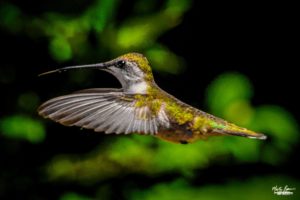
And one more thing, gardeners love birds. Keep those feeders full and, just a reminder, the annual hummingbird migration has begun, meaning that the majority of hummingbirds who spend the winter in Mexico, Central, or South America, will all be migrating back through the southern United States. So what does this mean for the hummingbird migration in Georgia? And even more important to answer, when will hummingbirds arrive in Georgia? The migratory birds arrive in south Georgia in early March. In the mountain areas, they usually arrive a couple of weeks later.
Get the feeders ready and let the humming commence!


